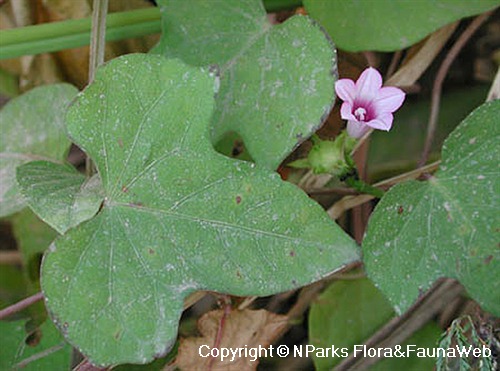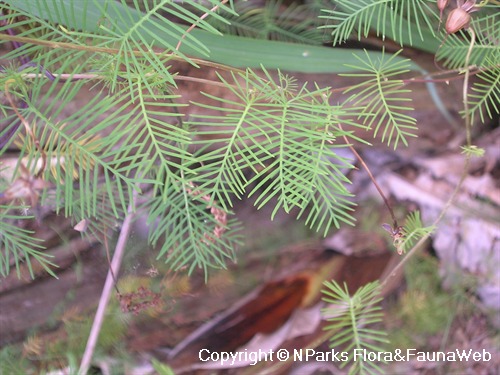
Back
Ipomoea quamoclit L.
| Family Name: | Convolvulaceae |
| Synonyms: | Quamoclit pennata, Quamoclit vulgaris, Convolvulus pennatus, Quamoclit pinnata |
| Common Name: | Sangga Langit, Cypress Vine, Cypressvine Morning Glory, Star-glory, Indian Pink, Cardinal Climber, Bunga tali-tali, 茑萝, 羽叶茑萝, 茑萝松, 縷红草 |
Name
Classifications and Characteristics
| Plant Division | Angiosperms (Flowering Seed Plants) (Dicotyledon) |
|---|---|
| Plant Growth Form | Climber |
| Lifespan (in Singapore) | Annual |
| Mode of Nutrition | Autotrophic |
| Plant Shape | Irregular |
| Maximum Height | 2 m to 6 m |
| Maximum Plant Spread / Crown Width | 0.3 m |
Biogeography
| Native Distribution | Tropical America (Mexico to northern South America) |
|---|---|
| Native Habitat | Terrestrial (Grassland / Savannah/ Scrubland, Disturbed Area / Open Ground) |
| Preferred Climate Zone | Tropical |
Description and Ethnobotany
| Others - Plant Morphology | Twining annual vine, climbing up to 6m under ideal conditions. Leaves ovate or oblong in outline, but deeply pinnately-lobed into slender threadlike segments, resulting in delicate lacy appearance.Flowers crimson-red, tubular with 5-pointed star-shaped petals, stay open throughout day, attractive to butterflies and hummingbirds. Fruits are explosive capsules, usually containing 4 seeds.Non-aggressive climber grown for ornamental foliage and contrasting flowers. Stems are thin and fragile, and plant needs vertical support (eg. fence or latticework trellis) to climb and spread out properly. Although drought-tolerant, plant blooms best when well-watered. Propagate by seeds or stem-cuttings.Genus name 'Ipomoea' means 'worm-like' -- a possible reference to the plant's twining habit or coiled flower-bud. Species epithet 'quamoclit' is the Greek name for kidney bean, describing the bowed shape of the seed leaves. |
|---|
Landscaping Features
| Desirable Plant Features | Ornamental Flowers, Ornamental Foliage |
|---|---|
| Landscape Uses | Vertical Greenery / Green Wall, Container Planting |
| Thematic Landscaping | Butterfly Garden, Naturalistic Garden |
Fauna, Pollination and Dispersal
| Fauna Pollination Dispersal Associated Fauna | Bird-Attracting, Butterfly-Attracting |
|---|---|
| Pollination Method(s) | Biotic (Fauna) (Flowers attract hummingbirds., Vertebrates (Bird), Insects (Butterfly, Moth)) |
| Seed or Spore Dispersal | Abiotic (Explosive Dehiscence) |
Plant Care and Propagation
| Light Preference | Full Sun |
|---|---|
| Water Preference | Moderate Water |
| Plant Growth Rate | Fast |
| Rootzone Tolerance | Fertile Loamy Soils, Well-Drained Soils, Drought Tolerant |
| Maintenance Requirements | Low |
| Potential Problems | Stems are thin and fragile, may break easily. |
| Diseases | Rust, fungal leaf spots, stem rot, thread blight, wilt |
| Pest(s) | Associated with |
| Propagation Method | Seed, Stem Cutting |
| Propagule Establishment Remarks | Pre-soak seeds in warm water for 24 hours before sowing. Take around 4 days to germinate. Seed-grown plants bloom in 30 days. |
Foliar
| Foliage Retention | Evergreen |
|---|---|
| Mature Foliage Colour(s) | Green |
| Mature Foliage Texture(s) | Smooth, Thin |
| Foliar Modification | Foliar Tendril |
| Foliar Type | Simple / Unifoliate |
| Foliar Arrangement Along Stem | Alternate |
| Foliar Shape(s) | Non-Palm Foliage (Ovate) |
| Foliar Venation | Pinnate / Net |
| Foliar Margin | Palmately Lobed |
| Foliar Apex - Tip | Acuminate |
| Typical Foliar Area | Microphyll ( 2.25cm2 - 20.25 cm2 ) |
Non - Foliar and Storage
| Stem Type & Modification | Herbaceous |
|---|---|
| Root Type | Underground (Fibrous Root) |
Floral (Angiosperm)
| Flower & Plant Sexuality | Bisexual Flowers |
| Flower Colour(s) | Red |
|---|---|
| Flower Symmetry | Radial |
| Individual Flower Shape | Trumpet-shaped |
| Flower Size - Remarks | 1.8 - 2.0cm long, 2.0 cm across |
| Flowering Period | Free-Flowering |
| Flowering Habit | Polycarpic |
Fruit, Seed and Spore
| Mature Fruit Colour(s) | Brown |
|---|---|
| Fruit Classification | Simple Fruit |
| Fruit Type | Dehiscent Dry Fruit , Capsule |
Image Repository
Others
| Master ID | 136 |
|---|---|
| Species ID | 1432 |
| Flora Disclaimer | The information in this website has been compiled from reliable sources, such as reference works on medicinal plants. It is not a substitute for medical advice or treatment and NParks does not purport to provide any medical advice. Readers should always consult his/her physician before using or consuming a plant for medicinal purposes. |

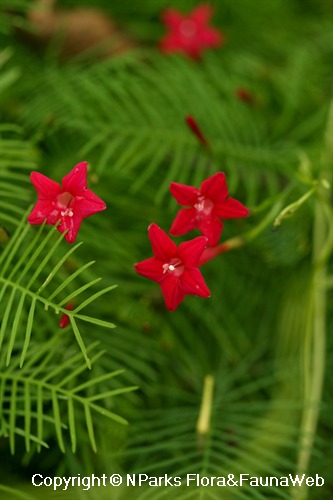
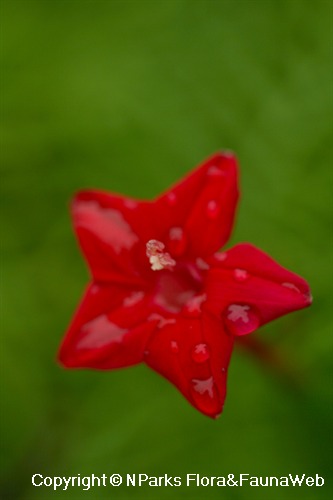



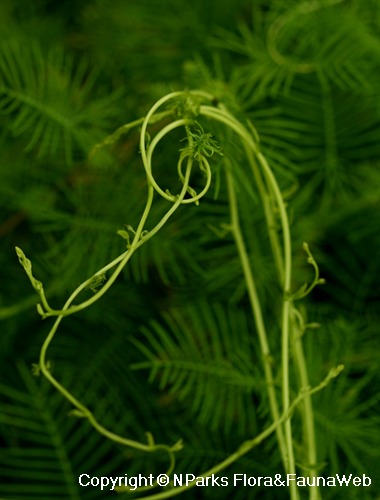
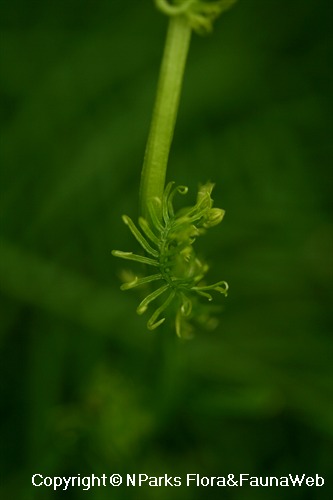
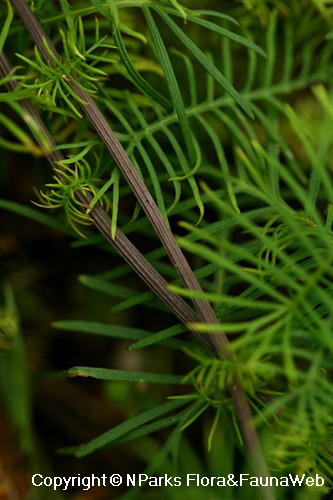
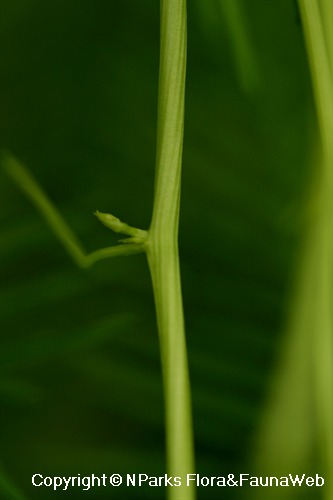

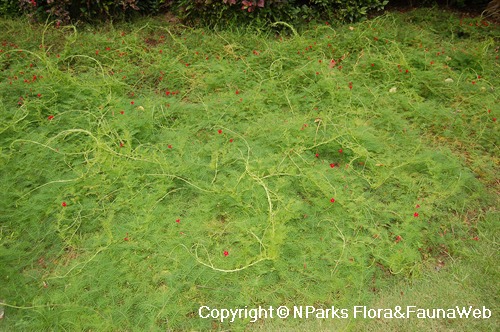
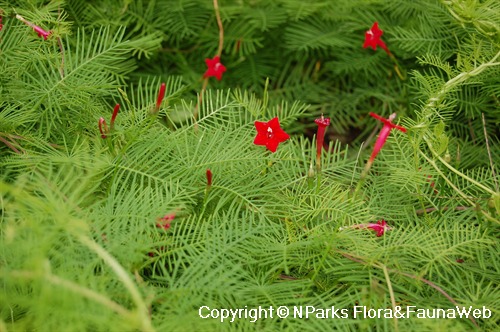
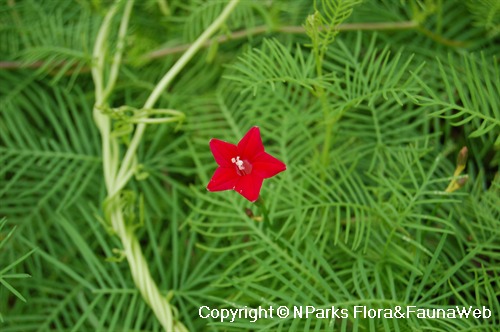
_lowres.jpg)
